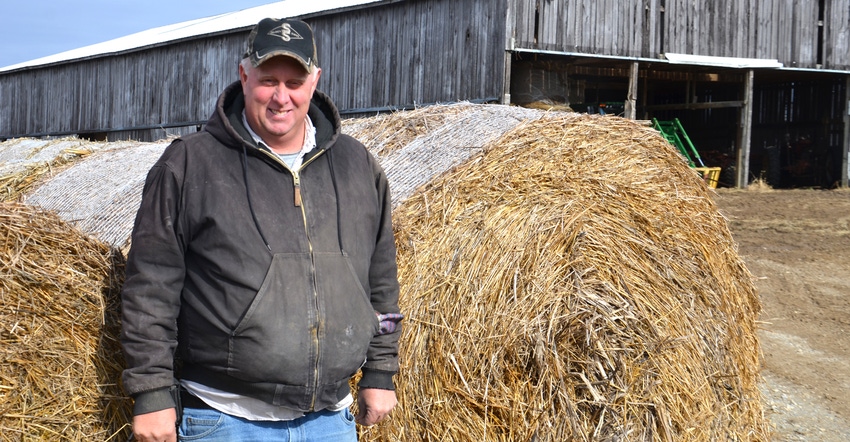
When Mike Andrew was attending Purdue University, ag economists advised students going back to farm to invest in equipment and inputs, not land. “I did just the opposite,” Andrew says, laughing. “Without a home farm to go back to and with land prices where I lived driven higher by development, I found a farm in Ohio County [Ind.] and bought it.
“I started farming here with an Allis-Chalmers WD and an International 1206. I soon found out that wasn’t much in the way of equipment.”
That was some 20 years ago. As it turns out, Andrew purchased his home farm before land prices went up in the area. Today, he’s able to make a living raising about 600 acres of corn, soybeans and wheat. But it’s the other things he does that help him monetize his labor and generate more income.
“I’m always looking for ways to add more dollars,” he says. “I’m not afraid to work, and if something requires labor, it doesn’t stop me from trying it.”
He’s one of the few farmers in his area still raising tobacco, although his contract was cut from 40 acres to 10 acres in 2019. Tobacco may not be the way forward for the future, he realizes.
“We’ve been able to develop a good market for hay, and I may seed another 30 acres of hay next year,” he says. “We have some alfalfa, but a lot of it is grass hay.”
Andrew’s operation baled 15,000 square bales in 2019 — the hard way, without mechanical equipment to stack it. Instead, migrant labor employed at the farm to work the tobacco also baled hay.
Hay offsets tough crop year
It was a less-than-perfect year for hay, with too much rain in June and dry weather late, but hay turned out better than corn and soybeans for Andrew in 2019. “Our soils have fragipans, and although we had our corn planted, we had so much rain in June that corn suffered,” he says. “Then it turned dry and stayed dry. Our yields were way off our three-year farm average.”
The strong demand for hay helped offset a serious dip in crop yields. Most of his square bales were sold out of the field. He also made a large number of round bales, but most of them will provide feed for his own cattle. “We hang on to them until we’re sure we have enough for ourselves,” he explains.
Cattle also adds diversity. Andrew has a 65-cow beef herd, typically marketing calves the following spring to other people to finish them out. “We usually background them through the winter, then sell them,” he says.
Diversifying adds extra income and spreads risk in a year like 2019. Working with older equipment helped hold down overhead costs. “We don’t run junk, but we don’t have the newest stuff either,” he says. “I figure if you’re going to invest in a piece of equipment, it better pay for itself.
You would expect Andrew to have a sound baler, and he does. “We bought a New Holland baler new, but it’s about 15 years old now,” he says.
About the Author(s)
You May Also Like




